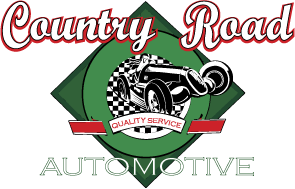If you’re driving and your brake warning light comes on, do you know what to do? With so many lights on a vehicle dashboard, you may not always know what a particular light is trying to tell you. A “red” brake warning light can mean there is a serious problem with your braking system that would require immediate action. Read on to find out why the light comes on and what you should do about it.
A typical vehicle braking system has three separate dashboard lights. It sounds like it would be confusing, but once you know what each light means, you will know what you have to do. First, the color of the light tells a story. “Red” lights are critical warning lights, where “yellow” or “orange” warning lights are cautioning you about something. Here are the typical brake warning lights found on most vehicle:
- The emergency brake light – This “red” light comes on when you turn on your emergency brake. Once you get back into your car and disengage the emergency brake, this “red” warning light should go off. Why is the light red? To let you know that if you drive with the emergency brake engaged, you will cause damage to your braking system.
- The anti-lock brake warning light – The warning light for the anti-lock braking system is “yellow” or “orange.” To find out why this light comes on, click here to learn about the anti-lock braking system.
- The brake warning light – This light is “red” and is alerting you to a serious problem with your vehicle’s braking system. If you are driving, and all of a sudden, the brake warning light turns on, you should safely pull off the road as soon as you are able. If you continue to drive, you may not be able to stop your car. You should call for a tow whenever this warning light comes on and stays on.
Note: Some cars only have one brake warning light that is used for the emergency brake and to alert you to a problem with your braking system. If this is the case with your vehicle, make sure the emergency brake is not engaged.
Why did my brake warning light come on?
When the level of brake fluid gets too low, the brake warning light comes on. This can occur as a result of the following:
- You need new brake pads. As you drive your vehicle, your brake pads are being worn down each time you put your foot on the brake pedal. Over time, and as the pads wear out, the brake fluid will be used up. When you have the brake pads replaced, you should also check the level and condition of the brake fluid. If the fluid level is low, replace it with the needed fluid. Only use the brake fluid indicated on the cap for the brake fluid reservoir or in your car’s owner manual. When you bring your vehicle in for brake repair in our auto repair shop in Lincoln Park, New Jersey, you won’t need to worry about checking and adding brake fluid. We will do that for you are part of the brake repair service.
- There is a leak somewhere in the brake system. If you don’t need new brake pads, there’s a high probability there is a leak in the brake system. You need to have your braking system inspected and any leaks repaired immediately. Low or no fluid in the brake system means you won’t be able to stop your vehicle. Have your car towed to us and we will find and repair the leak.
There are some other signs of brake problems that may not trigger the brake warning light. Click here to read about the signs you may need brake repair. It’s always better to be safe than sorry so if you suspect a problem with your brakes, bring your vehicle in for a free brake inspection. Click here to make an appointment to have your brakes checked or repaired at Country Road Automotive in Lincoln Park, NJ.

